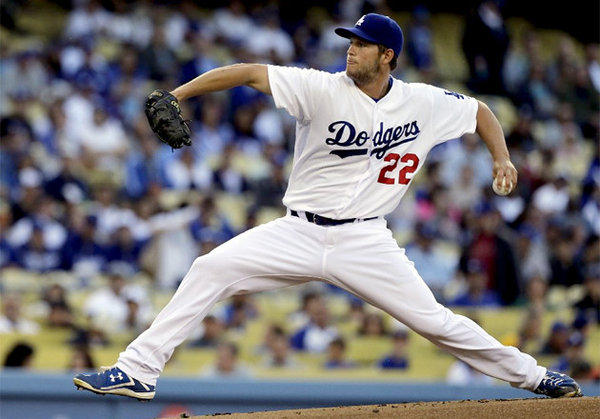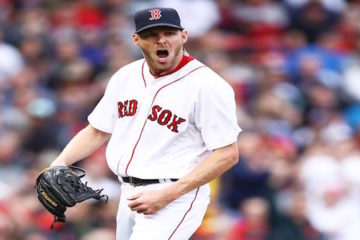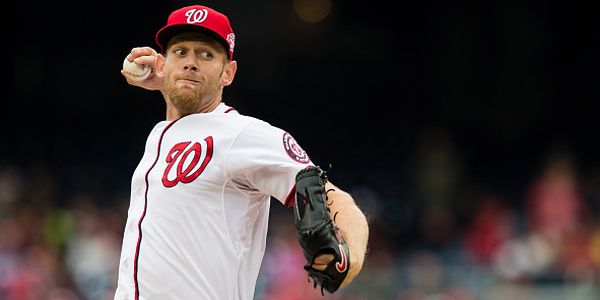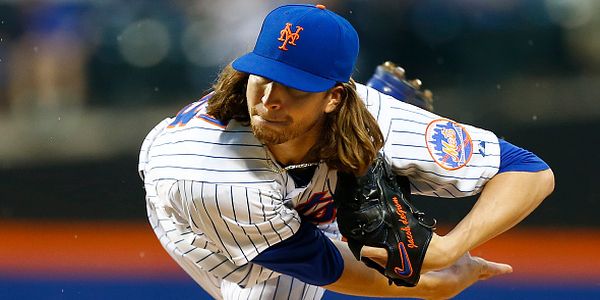2014 Fantasy Baseball: Total Run Index – ADP vs. TRI Starting Pitchers 1-20
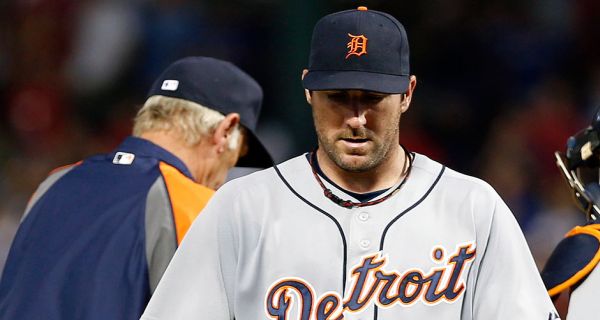
I can’t think of a single position where there has been more advancement in sabermetrics than pitching over the past decade. A scant decade ago, we were still concerning ourselves with wins, losses, WHIP, and ERA. With the exception of losses, all of them are still staples in the fantasy world, but we evaluate pitchers in two different ways. There is what I would like to call “results data”. Results data includes those wins, losses, ERA, WHIP, and other traditional numbers. Then there is what we would call “process data.” Those are the numbers behind the numbers. In essence, they have become better predictors of future performance than the standard results we used to look at.
BE PREPARED FOR YOUR FANTASY DRAFT, GRAB OUR 2014 FANTASY BASEBALL DRAFT GUIDE!
TRI is build largely on the process data. Much of this has come from pitch f/x and that has revolutionized the industry. In effect, we can look at a player’s improvement or slippage and determine whether it was due to luck or an actual change in the performance of the pitcher. That way, we can better predict what will happen next. TRI is still built on past performance, but it evaluates the performance behind the scenes and in so doing, does a better job of predicting the future.
It has its limitations to be sure. In particular, predicting the future for any young pitcher is even more difficult than predicting the future for a young position player. So, we will see a couple of younger guys on the board early and things will look ugly according to TRI when really it is just a case of lack of exposure. The bias of TRI is clear, but it shouldn’t be ignored as just a bias. TRI prefers players with strong track records and you probably should too. As I said before in another article, past is prologue. So, we move into the world of starting pitching.
|
POS |
ADP |
Index |
|
| Clayton Kershaw |
1 |
6.33 |
+41.3 |
| Yu Darvish |
2 |
16.72 |
+30.9 |
| Max Scherzer |
3 |
28.58 |
+29.3 |
| Jose Fernandez |
4 |
29.07 |
+27.1 |
| Adam Wainright |
5 |
33.63 |
+35.1 |
| Stephen Strasburg |
6 |
34.72 |
+12.4 |
| Felix Hernandez |
7 |
43.02 |
+32.6 |
| Cliff Lee |
8 |
44.37 |
+37.0 |
| Justin Verlander |
9 |
44.67 |
+47.3 |
| Madison Bumgarner |
10 |
47.16 |
+19.0 |
| Chris Sale |
11 |
49.42 |
+25.9 |
| David Price |
12 |
53.53 |
+28.3 |
| Zack Greinke |
13 |
60.42 |
+32.4 |
| Cole Hamels |
14 |
62.33 |
+27.3 |
| Anibal Sanchez |
15 |
77.28 |
+26.4 |
| Jordan Zimmermann |
16 |
86.02 |
+19.7 |
| Michael Wacha |
17 |
87.56 |
+1.3 |
| Hisasi Iwakuma |
18 |
88.95 |
+13.2 |
| Gerrit Cole |
19 |
93.98 |
+5.7 |
| James Shields |
20 |
98.58 |
+25.2 |
TRI Potential Bargains
Justin Verlander— Detroit Tigers
I can certainly understand Clayton Kershaw being number one on the board. However, it should be noted that Verlander has the better TRI score over the past three and five seasons. Last season was a down year relatively, but I would settle for that kind of down year. The difference between Verlander and almost everyone else is that he gives you so many innings that you get statistics like wins, quality starts, and strikeouts in spades. Some leagues offer the quality start component and if yours does then Verlander is a much more viable candidate.
Even during a down year last year, you could argue that he was still a better pitcher than his Cy Young Award winning teammate Max Scherzer. Scherzer certainly had the more sparkling winning percentage, but in three or four (depending on what kind of league you played in) other categories, Verlander was as good if not better. Personally, I would make Verlander my number two pitcher on the board and not even think twice about it.
James Shields— Kansas City Royals
The idea of Shields as a sleeper is a bit misleading. After all, there are two guys on the next list that have TRI scores over 20. However, without seeing those scores we have to work within the group we have. Shields is being drafted 20th overall despite having the 14th best TRI of the group. Furthermore, he has a couple of things going for him that TRI really can’t account for. First, the Royals have one of the better bullpens in the American League. Last season, their 2.55 AL bullpen ERA rated as the lowest in the league and second in all of baseball. Better bullpens means more leads protected and more wins for the pitcher.
The other end of that equation is run support and that is probably where Shields suffered the most this past season. The Royals offensive attack was average at best because of numerous holes in the batting order. They’ve added Omar Infante at second base and Norichika Aoki in right field. Neither are world beaters, but they replace two relative black holes offensively. If Mike Moustakas ever develops at the plate, they could go from being a pedestrian offense to a very good one. Add in a very good offense to a very good bullpen and a solid starter can suddenly look like a very good one in the wins department.
TRI Overdrafted
Stephen Strasburg— Washington Nationals
Okay, okay, I know what you are thinking. Everyone knows Strasburg is one of the top ten pitchers in all of baseball. So, let’s leave this TRI mumbo-jumbo aside and look at some real numbers. He has exactly one season where he has won more than eight games, two seasons where he has pitched more than 100 innings, and zero seasons with 200 or more strikeouts. I’ll give you that his career WHIP numbers are outstanding and the talent is definitely there to do it, but he has yet to prove that he can even work one season and throw 200 innings.
Currently, he is going as the sixth starting pitcher according to our average daily drafts and that seems outrageous. I know he has the talent to dominate, but wouldn’t you want someone like Justin Verlander (going on average 9th among pitchers) who has actually dominated? Heck, King Felix and Cliff Lee are going below him and they dominated for much of last season. Call me a doubting Thomas, but I need to see it actually happen before I’m going to bid on someone this high.
Michael Wacha— St. Louis Cardinals
The baseball universe is littered with guys like Wacha and yet people still fall for it. Let’s consider the case of Matt Moore a couple of years ago. Moore came up in late August, hurled a shutout in September and then in October in the playoffs. The next season, people were falling over themselves to draft him. He followed it up with an 11-11 season in his first full year in the big leagues. It happens, rookies come and pitch lights out only to be figured out in their next go around. To Moore’s credit, he went 17-4 this past season in his second full season. So, this isn’t an attempt to say Wacha is destined to mediocrity. He could very well be a great pitcher after all.
The point is that he might not be a great pitcher in 2014. If you are in one of those dynasty/keeper leagues then Wacha might be a decent long-term bet, but he also might be a guy that got hot at the right time. Most pitchers that last beyond a couple of seasons go through spurts of five or six starts where they look great. Wacha made twelve starts (counting the playoffs) where he looked great and then ran into the Boston Red Sox. It happens. The index has him going very late and that might be foolish too. After all, Moore has been 28-15 in the past two seasons, so maybe it wasn’t all hype. The truth on Wacha is likely somewhere in between stud and also-ran. That dictates that he probably shouldn’t be drafted among the top twenty starting pitchers.


